Sensor Sweep: Sword & Sorcery, Forgotten Realms, Tolkien, Frazetta
Monday , 28, April 2025 Sensor Sweep Leave a commentRobert E. Howard (Jose’s Amazing World of Fantasy): Join us for an exclusive live interview with Willard M. Oliver, acclaimed author and scholar, as we dive deep into his latest biography, Robert E. Howard: The Life and Times of a Texas Author.
Weird Tales (Tellers of Weird Tales): Early on there must have been authors who showed real promise. For example, Canadian author Julian Kilman (1878-1954) had five stories in the first year of Weird Tales. Readers never heard from him again. They loved “Invaders from Outside” by J. Schlossel (Joseph H. Schlossel [1902-1977]), published in the January issue of 1925. But Schlossel had just two more stories in Weird Tales, in 1925 and 1926.
Cinema (Akkad Daily): Look at What They’ve Done to the Predator
James Bond (The Spy Command): This year marks the 60th anniversary of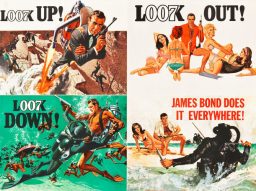 Thunderball, the fourth Bond film and the apex of the 1960s spy craze. The movie was a milestone. In the fall of 1965, spies had taken over television, trying to get a piece of the spy frezeny unleashed by Agent 007. But Thunderball transcended all that.
Thunderball, the fourth Bond film and the apex of the 1960s spy craze. The movie was a milestone. In the fall of 1965, spies had taken over television, trying to get a piece of the spy frezeny unleashed by Agent 007. But Thunderball transcended all that.
 Tolkien (Stuff I Like): In my first Lord of the Rings article on Black Gate, a commenter described the book as “tasting of ashes” and attributed it to Prof. Tolkien’s experiences during the First World War. I don’t taste the ashes, but there are parts of the trilogy that reek heavily of them. He had managed to defer joining the army (as an officer) until he graduated in 1915. This meant he missed the early portion of the war – the Marne, Loos – but it meant he literally had his baptism of fire during the Somme Offensive.
Tolkien (Stuff I Like): In my first Lord of the Rings article on Black Gate, a commenter described the book as “tasting of ashes” and attributed it to Prof. Tolkien’s experiences during the First World War. I don’t taste the ashes, but there are parts of the trilogy that reek heavily of them. He had managed to defer joining the army (as an officer) until he graduated in 1915. This meant he missed the early portion of the war – the Marne, Loos – but it meant he literally had his baptism of fire during the Somme Offensive.
Pulp (Comics Old Time Radio): The April 1932 issue of The Shadow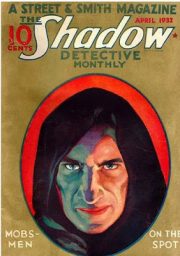 Magazine featured the novel Mobsmen on the Spot. Written by Walter Gibson (under the usual house name of Maxwell Grant), this story introduced us to Cliff Marsland, is a man who did a term in Sing Sing after being convicted of a crime he didn’t commit. He’s out now and recruited by the Shadow to help break up a multi-layered protection racket that plagues New York City.
Magazine featured the novel Mobsmen on the Spot. Written by Walter Gibson (under the usual house name of Maxwell Grant), this story introduced us to Cliff Marsland, is a man who did a term in Sing Sing after being convicted of a crime he didn’t commit. He’s out now and recruited by the Shadow to help break up a multi-layered protection racket that plagues New York City.
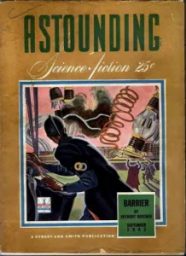 Science Fiction (Adventures Fantastic): For today’s post, I want to look briefly at some of his time travel stories. He wrote a number of them, the best in collaboration with his wife C. L. Moore.
Science Fiction (Adventures Fantastic): For today’s post, I want to look briefly at some of his time travel stories. He wrote a number of them, the best in collaboration with his wife C. L. Moore.
I haven’t read all of his time travel, but these three are some of his best and among my favorites of all his work.
Fantasy (Swordslore): Before the month of March ends, I thought it fitting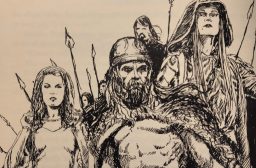 to see off this period that celebrates Irishness (in mostly North America at least) by reviewing the second story in Neither Beg Nor Yield inspired by Irish myth and folklore. NBNY is an anthology of sword & sorcery fantasy that collects stories from recent and current authors in the genre, presenting yarns not only set in ancient, imagined worlds but also present-day Earth.
to see off this period that celebrates Irishness (in mostly North America at least) by reviewing the second story in Neither Beg Nor Yield inspired by Irish myth and folklore. NBNY is an anthology of sword & sorcery fantasy that collects stories from recent and current authors in the genre, presenting yarns not only set in ancient, imagined worlds but also present-day Earth.
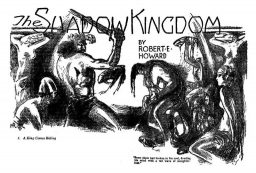 Fantasy (Dark Worlds Quarterly): This post is the first of a series on “The Firsts” of Sword & Sorcery, fiction, films, comics, all of it. Do you know what the first true S&S tale was? When Conan made his debut? Who painted the first cover? Etc. Well, that’s what this one is all about, beginning in the Pulps where Sword & Sorcery was born. We will focus on 1929 to 1939.
Fantasy (Dark Worlds Quarterly): This post is the first of a series on “The Firsts” of Sword & Sorcery, fiction, films, comics, all of it. Do you know what the first true S&S tale was? When Conan made his debut? Who painted the first cover? Etc. Well, that’s what this one is all about, beginning in the Pulps where Sword & Sorcery was born. We will focus on 1929 to 1939.
Cold Steel (Youtube): Big swords don’t work the way you think.
Art (Frazetta Girls): On this episode of Frazetta Fridays with Frazetta Girls, Sara Frazetta soars into Frank Frazetta’s untamed take on The Lord of the Rings. Frank was never officially connected to Tolkien’s world, but that didn’t stop him from leaving his mark. His raw, wild, and unapologetically controversial interpretations broke all the traditional rules — and showed Middle-Earth in a way no one else dared to.
RPG (Grognardia): After last week’s Retrospective post on the Q Manual for James Bond 007, my thoughts were starting to turn towards espionage RPGs. This inevitably led me back to TSR’s Top Secret, which I loved but didn’t play as often as I’d have liked.
Forgotten Realms (Vintage RPG): This is the third Adventures hardcover,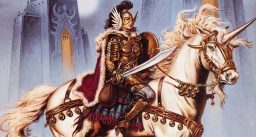 following Dragonlance (1987) and Greyhawk (1988), and first non-rulebook hardcover for AD&D second edition. Rather than a stand-alone re-introduction to the Realms, it is an expansion of the 1987 Campaign Set, filling in the Heartlands, one of the regions the ‘87 box left blank for homebrew DMs.
following Dragonlance (1987) and Greyhawk (1988), and first non-rulebook hardcover for AD&D second edition. Rather than a stand-alone re-introduction to the Realms, it is an expansion of the 1987 Campaign Set, filling in the Heartlands, one of the regions the ‘87 box left blank for homebrew DMs.
RPG (Grumpy Wizard): I have long been convinced that the “tell a story” approach to game mastering produces a less enjoyable experience than simply running the game. I’m not talking about “story games” or narrativist games like Apocalypse World. Those games, ironically, are designed so that you can’t create a story before you sit down to play the way “storytelling” game masters do in conventional RPGs.
Clark Ashton Smith (Vintage Pop Fictions): Poet-short story writer Clark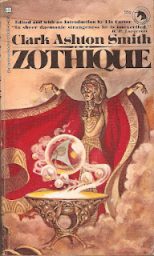 Ashton Smith was a prolific contributor to pulps such as Weird Tales in the 1930s. He was part of Lovecraft’s circle of writer friends who kept in constant contact by letter, shared ideas and sometimes settings and influenced one another. The big three of the Lovecraft circle were Lovecraft himself, Robert E. Howard and Clark Ashton Smith.
Ashton Smith was a prolific contributor to pulps such as Weird Tales in the 1930s. He was part of Lovecraft’s circle of writer friends who kept in constant contact by letter, shared ideas and sometimes settings and influenced one another. The big three of the Lovecraft circle were Lovecraft himself, Robert E. Howard and Clark Ashton Smith.
Star Wars/Radio (Donald Phillips): Star Wars:A New Hope The Original NPR Drama.
Cinema (Kairos): Red Letter Media recently released a video lamenting Hollywood’s disastrous 2025 box office numbers. As usual, they’re cutting, observant, and funny in a Gen Y “pushing the envelope in a safe direction” way. But they also misunderstand what’s happening—and why, despite all the dooming, it’s good news.
Westerns (Rough Edges): Last week I reran a review of a Ben Haas novel from some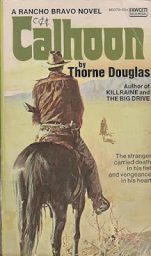 years back, and that put me in the mood to read another Western by him. For decades, I’ve been meaning to read his Rancho Bravo novels, a five-book series published by Fawcett in the Seventies under the pseudonym Thorne Douglas. I know an omen when I see one, so I dug out my copy of CALHOON, the first book in the series.
years back, and that put me in the mood to read another Western by him. For decades, I’ve been meaning to read his Rancho Bravo novels, a five-book series published by Fawcett in the Seventies under the pseudonym Thorne Douglas. I know an omen when I see one, so I dug out my copy of CALHOON, the first book in the series.
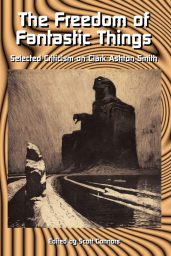 Clark Ashton Smith (Pulp Super Fan): I recently picked up two books from Hippocampus Press on Clark Ashton Smith (1893-1961). This was part of a special deal when one of the editors, Scott Connors passed away. An authority on CAS, Connors had edited the five-volume set of CAS fiction from Nightshade Book and was working on a CAS biography.
Clark Ashton Smith (Pulp Super Fan): I recently picked up two books from Hippocampus Press on Clark Ashton Smith (1893-1961). This was part of a special deal when one of the editors, Scott Connors passed away. An authority on CAS, Connors had edited the five-volume set of CAS fiction from Nightshade Book and was working on a CAS biography.
Soundtracks (Por Por Books): For quite some time now I’ve been toying with the idea of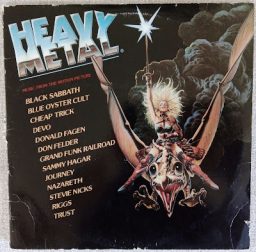 getting the soundtrack, as an LP, to the 1981 film ‘Heavy Metal.’ I have noticed that the prices for copies of the vinyl edition are getting up there, into the $30 and over range for copies in ‘Very Good’ condition, or better. So I recently shelled out $27 for a VG copy.
getting the soundtrack, as an LP, to the 1981 film ‘Heavy Metal.’ I have noticed that the prices for copies of the vinyl edition are getting up there, into the $30 and over range for copies in ‘Very Good’ condition, or better. So I recently shelled out $27 for a VG copy.
 Horror (The Obelisk): Well friends, we are once again entering the shuddersome world of Karl Edward Wagner’s famous 39 List. Today, despite the high weirdness of our previous two entries, we stumble upon maybe the most grotesque and “out-there” novel of the entire list. Published in 1938, R.R. Ryan’s Freak Museum is a gonzo novel—1/3 melodrama, 1/3 science fiction-horror, and 1/3 espionage story.
Horror (The Obelisk): Well friends, we are once again entering the shuddersome world of Karl Edward Wagner’s famous 39 List. Today, despite the high weirdness of our previous two entries, we stumble upon maybe the most grotesque and “out-there” novel of the entire list. Published in 1938, R.R. Ryan’s Freak Museum is a gonzo novel—1/3 melodrama, 1/3 science fiction-horror, and 1/3 espionage story.
Booklets (Pulp Super Fan): The 2024 Windy City Pulp and Paper Convention was held in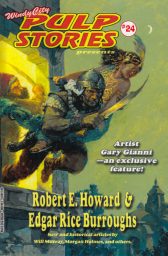 April, and the new Windy City Pulp Stories #23 is out. For the first time, I was able to attend the convention. The program book is again available through Amazon, as are most going back to #8, and published by Black Dog Books.
April, and the new Windy City Pulp Stories #23 is out. For the first time, I was able to attend the convention. The program book is again available through Amazon, as are most going back to #8, and published by Black Dog Books.
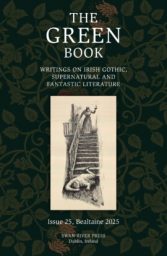 Horror (Swan River Press): If you’ve already browsed the contents of this issue, you’ll have noticed that we devoted the entire number to Joseph Sheridan Le Fanu (1814-1873). The last time we gave so much space to Le Fanu was for the bicentenary of his birth in 2014 (see Issue 3 and Issue 4). There is no special occasion to herald this issue, save that we’ve since accumulated a handful of interesting items that I feel deserve broader attention.
Horror (Swan River Press): If you’ve already browsed the contents of this issue, you’ll have noticed that we devoted the entire number to Joseph Sheridan Le Fanu (1814-1873). The last time we gave so much space to Le Fanu was for the bicentenary of his birth in 2014 (see Issue 3 and Issue 4). There is no special occasion to herald this issue, save that we’ve since accumulated a handful of interesting items that I feel deserve broader attention.
History (The Jolly Reiver): Here is the long-awaited part 2 of the Border Reiver series. The Reivers were the riding families/clans that lived on both sides of the Anglo-Scots border. Their loyalty lay with their family and not their nation.
History (Frontier Partisans): Ownership of Black slaves pushed many of the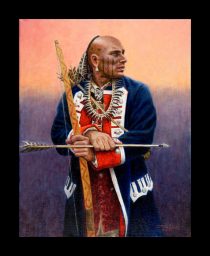 tribal peoples of the Indian Territory (future Oklahoma) and Kansas and Missouri toward support for the Confederacy in the American Civil War. Mostly these people were Cherokee, Choctaw, Chickasaw, Creek and Seminoleof the Southeast, known by the mid-19th Century as as the “Five Civilized Tribes.”
tribal peoples of the Indian Territory (future Oklahoma) and Kansas and Missouri toward support for the Confederacy in the American Civil War. Mostly these people were Cherokee, Choctaw, Chickasaw, Creek and Seminoleof the Southeast, known by the mid-19th Century as as the “Five Civilized Tribes.”
Alcohol (Fortress of Lugh): Even before the Bronze Age, there was a drink that held sacred importance to the Proto-Indo-Europeans. Mead was so important to their culture that its vocabulary was spread all the way to the far edges of East Asia and the most westerly shores of Europe.
Please give us your valuable comment